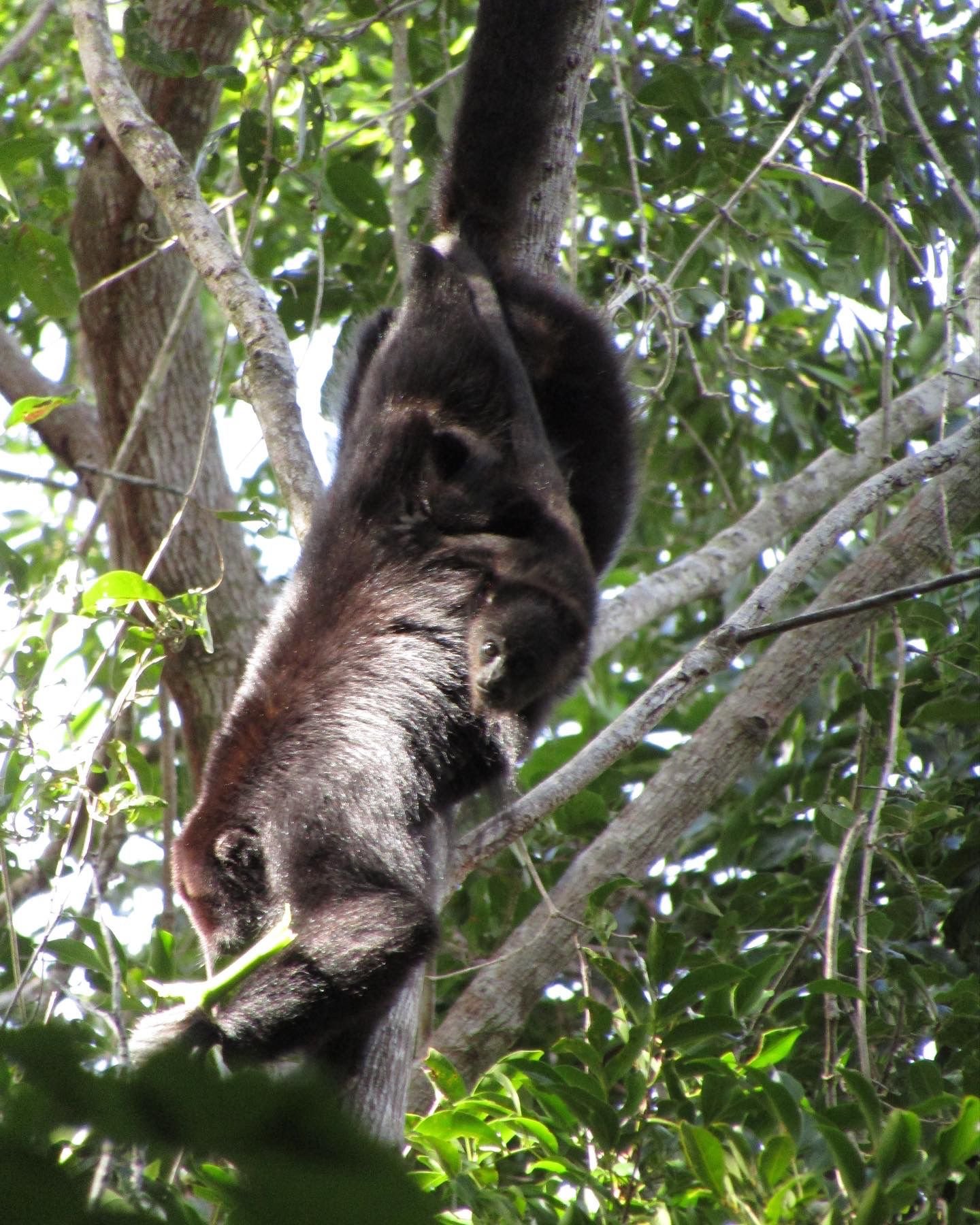Best Beginnings
An infant howler monkey exactly where he should be - with his mother in the forests of Fireburn.
Alisha Huotari is continuing her assessment of the reintroduced Yucatan black howler monkeys at Fireburn, as part of an initiative to strengthen the resilience of both this species and the North East Biological Corridor in Belize. Her second blog from the field highlights the role rehabilitated monkeys can have in rewilding - the ability of wild animals to return to the wild and contribute to the long term viability of endangered species should never be underestimated.
Standing in Fireburn witnessing this infant with his mother seems extra special after spending time volunteering in the Primate Nursery Unit at Wildtracks, where infant monkeys have either been confiscated from the illegal wildlife trade or found injured and rescued. While they may not be lucky enough to have their mothers, they receive intensive care from the staff and volunteer team, tailored to their individual needs as they go through the different stages of rehabilitation. This process is essential for the howlers to not only be able to survive in the wild, but also to thrive in the wild. As a result of this hard work, their futures are bright!
The past track record of Wildtracks shows that it is possible to take in young confiscated howler monkeys and help them learn the skills they need to be part of a wild howler population. Many of the rehabilitated and released primates in Fireburn had a beginning that started with their capture for the illegal wildlife trade, poor care and confiscation by the Forest Department, to then continue after confiscation in the Primate Nursery Unit. It's pretty amazing to think that these infants are now part of the wild population and raising their own young in Fireburn. In the troops we have found so far, babies are booming. Not only does this highlight the success of the rehabilitation programme and the Wildtracks reintroduction, but also gives hope for the future of this endangered species.

